BlogRSS
New theme: ‘Monochromes’
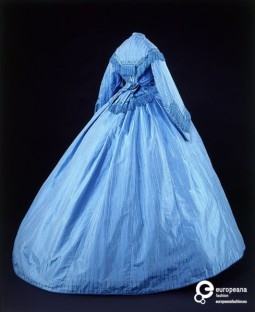
For this new theme, Europeana Fashion explored its collection through its multitude of hues, selecting a bunch of beautiful pieces for which just one colour is enough!
Let’s Dance!
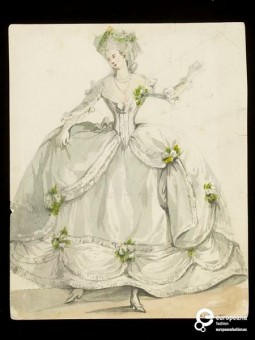
A new theme available now on Europeana Fashion portal: Let’s Dance! A gathering of fashion objects linked to the world of dance.
Well-known to the collective imagination, the ballgown has long been considered the culmination of fashion trends, in many epoques and different geographies.
Dance is a form of expression that has naturally developed in different societies: the research and use of rythm, the excercise of both free and controlled movements, the performative potential of the body are all phenomena examinated by disciplined dealing with human behaviour, such as sociology, ethnography and antropology.While being often regarded as a moment of freedom, dance has indeed been translated in well-constructed and ‘designed’ events, such as balls and receptions, which were – and still are – occasions for men and women to meet. The birth of society system saw the development of balls as the occasions for young ladies to debut and hopefully find the right partner; the actual dance was the ground where pairs were made, according to the ability to lead and follow, that was considered to mirror the capacity to be a good husband and wife. Still now, the dancefloor is supposed to be one of the best places for couples to meet, being a sort of shared space where people with the same tastes get together and move following the same beat.
Since balls, in all their different formats and venues, are events where ‘to see and be seen’, they call for the right clothes. From the court receptions to the more recent proms, passing through the folkloristic balls, usually performed wearing traditional costumes, and the disco, the ‘dance attire’ has always been about visibility and appearance, arousing in both men and women the desire to appear at their best, in line with the evolving standards of beauty of each time.
Usually designed according to the kind of movement the body has to perform in order to dance, these dresses actively partecipate in the dance itself; their features are not just ephemeral details, but they become fundamentally functional; volants, sequins, accessories: all these details are thought in relation to the environment they are going to get in conversation with, and help the body to move in the right way and to create a precise kind of silhouette.
From a historical point of view, they are often a good starting point to better understand the ideals of beauty and acceptability of the society they come out of. On a more personal level, they visually translate the ambition to appear, to sound, to fly like a bird to the beat of the music: once worn, dance gowns become sort of magic objects, transforming the wearer from duckling into swan and boosting his or her confidence. In any case, they are not only worn to be seen, but above all to be noticed and to be remembered.
Visit Europeana Fashion themes area to see more images and get inspired to discover more about the fascinating links between fashion and dance.
Europeana Fashion meets Paul Van Riel
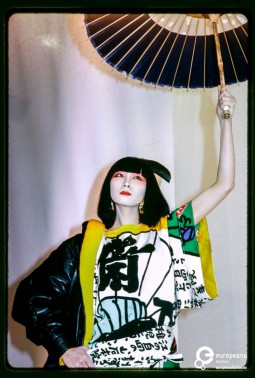
The latest update of Europeana Fashion Archive has seen the publication of the photo archive of the Dutch fashion photographer Paul van Riel, who has recently joined the portal as new content provider.
Amsterdam-based, Dutch freelance photographer with an international career in travel and corporate photography, Paul van Riel has dedicated part of his career documenting fashion shows around the globe. In order to present him and his work, we have asked him to share some memories about his past, his practice and his take on fashion. Here is what he told us.

Fashion show of Kansai Yamamoto winter 1981-1982 women's ready-to-wear collection. Model: Sayoko Yamaguchi. Photo by Paul van Riel. Paris, 1981. Photo © Paul van Riel / HH. All rights reserved.
As we learn from your biography, you have produced photo essays on a wide range of topics and you have travelled a lot. How do you consider your work for fashion, compared to that focused on other subjects?
Fashion photography entered my career only after having been in the business for about 7 or 8 years. In 1974 I tugged along with a friend from Amsterdam, who was a fashion-trade journalist on assignment in Paris, visiting the Salon du Prêt-à-Porter, which was entirely new to me. What started as a nice outing in Paris, quite thoroughly changed my life. I stumbled into a show by Kenzo at the Vieille Bourse and I was approached by various people then and there wanting to buy the rolls of film I had shot. Back home, I contacted a weekly news/lifestyle magazine to shoot a reportage on this Paris fashion scene and within a year, with lots of new contacts, I found myself shooting a growing number of défilés for more than one publication. Till then, my work had mainly been about travel and music photography, the occasional news assignment and some product photography; but between 1975 and 1990 my work schedule was (partly) organized around the fashion show calendars.

Fashion show of Kenzo spring-summer 1982 women's ready-to-wear collection. Applause at end of show. Photo by Paul van Riel. Paris, 1981. Photo © Paul van Riel / HH. All rights reserved.
You are usually recognised as a photographer, but in your work – even in the catwalk pictures – there is a strong creative element, that makes you an ‘image maker’ – or ‘artist’ – in a wider sense. How would you describe yourself and your work, both in general and in relation to the fashion system?
The scene at the Salon and the Kenzo show opened my eyes to a whole new world. I was, and still am, much more interested in the ambiance of these affairs, the social and economic aspects, than in the actual ‘fashion’. Many of the mostly Dutch and Belgian ladies and lifestyle magazines which published my catwalk images, soon asked me to shoot in studio. But to be honest…I preferred to shoot these productions on site; the background, the setting of these shoots were, for me, as important as the clothes themselves. There, I could combine my ‘eye’ for outdoor situations – often without any people in them – with a growing feel for clothing and beauté. It is no surprise that I love the creations of designer Issey Miyake; his work echoes my interest in architecture, sculpture, product design.
In 1989 I decided to bid farewell to the Paris fashion ‘circus’, after fifteen hectic years. It had become too crowded and ‘commercial’. In October of that year, instead of shooting fashion on stage, I shot a twelve page full colour photo essay for the important Dutch opinion magazine Vrij Nederland, focusing on backstage and on the ambiance around the shows; there were models, buyers, aficionados, photographers, journalists, makeup artists and so on.

Fashion show of Issey Miyake spring-summer 1978 women's ready-to-wear collection. Model: Sayoko Yamaguchi. Paris, 1977. Photo by Paul van Riel. Paris, 1981. Photo © Paul van Riel / HH. All rights reserved.
What made you decide to organise an archive of your work? What does the act of archiving mean, to you as an author?
I always held on to almost all the material I photographed over the years, fashion and otherwise, as well as hundreds if not thousands of my published pages of photography; I also kept the full correspondence with clients and organizations, and stacks of notebooks, accounts of travel expenses etc…not very much is being thrown away here. Europeana Fashion gave me the final push to start digitizing all of that, systematically. As it costs too much time to make a representative selection out of all the more than 1.000 shows I photographed in Paris and Milan, I decided to reproduce each entire collection.

Fashion show of Jean-Paul Gaultier spring-summer 1983 women's ready-to-wear collection. Queen Elizabeth look alike. Photo by Paul van Riel. Paris, 1982. Photo © Paul van Riel / HH. All rights reserved.
You have enriched the Europeana fashion portal with an amazing selection of images. Could you give us an idea of the kind of material you decided to share, and why?
Looking back at the Prêt-à-Porter work – some of it is 42 years old – it tells a great story of changing tastes, the influence of various cultures on the global face of fashion (e.g. the Japanese entering the stage in the late 70’s, early 80’s). It really testifies the passage from simple catwalk shows with models holding a card with a number on it, to the outrageous multi-media presentations attended by thousands of people.

Fashion show of Jean Paul Gaultier. Paris, 1989. Photo by Paul van Riel. Paris, 1981. Photo © Paul van Riel / HH. All rights reserved.
As a photographer, in which way would you make use of a resource as Europeana Fashion?
For me, as a photographer now just interested in fashion ‘on the side’, the Europeana Fashion database does offer a lot of information when doing research for future, design related stories.
Search the amazing Paul van Riel‘s collection on Europeana Fashion portal!
For more information, please visit Paul van Riel
Karl Lagerfeld – The Photographer at Pitti Uomo 90

Palazzo Pitti inaugurates a three-year program dedicated to the culture of contemporary fashion with a through-the-lens view of Karl Lagerfeld’s photographic works.
The exhibition “KARL LAGERFELD - Visions of Fashion”, curated by Eric Pfrunder and Gerhard Steidl, opened yesterday, 14thPitti Archive: “The Fourth Sex. Adolescent Extremes”

The 2003 exhibition gives a meaningful insight in Simons’ world. Co-curated by Francesco Bonami and Simons himself, the exhibit reflected upon a central figure in the work of Simons, the teenager.
Crowdheritage Workshop at MoMu
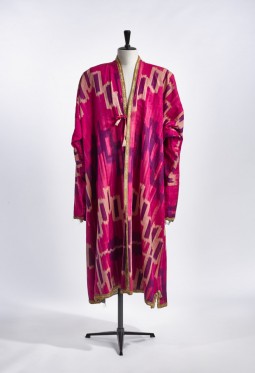
>On Tuesday 14th June, MoMu - Fashion Museum Province of Antwerp is hosting a workshop on crowdfunding and crowdsourcing. Addressed to cultural heritage professionals, the workshops aims to teach how to engage users to let them make contributions to cultural heritage collections through crowdfunding and co-creation.
Conference: “History, Production, Trade and Use of Venetian Textiles”

From the 25th to 27th May, Palazzo Mocenigo in Venice hosted the International Conference on Venetian Textiles
Europeana Fashion Portal Update
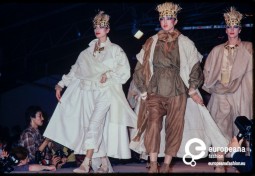
A new search function, new themes and a lots of new pictures are now available on the Europeana Fashion portal!
Across art and fashion at Palazzo Spini Feroni

Inaugurated on May 18 2016, the new exhibition promoted and organized by Fondazione Ferragamo and Museo Salvatore Ferragamo explores the relationship between art and fashion.
The concept of the exhibition draws directly from the life story of Salvatore Ferragamo, whose fascination with twentieth century avant-garde art movements led him to seek for inspiration in the art world. It presents various case histories, analysing the ways in which these two worlds have interacted, through contamination, overlap and collaboration.
The exhibition encompasses a diverse range of movements and experiences: from the work of the Pre-Raphaelites to that of the Futurists and from the complexities of Surrealism to those of Radical Fashion; as well as showcasing inspirations, it allows to reflect on the ateliers where artists met and studied during the 1950s and the 1960s and on the birth of celebrity culture.
The display also explores the artistic experimentations of the 1990s and ultimately asks whether art and fashion, both part of today’s cultural industry, are separate and distinct, or are rather intertwined in a fluid role-play.
Conceived and curated by Stefania Ricci with Maria Luisa Frisa, Enrica Morini and Alberto Salvadori, the exhibition was developed in collaboration with other cultural institutions active in Florence and nearby, such as the Biblioteca Nazionale Centrale, the Gallerie degli Uffizi (the Galleria d’arte moderna, the Galleria del Costume di Palazzo Pitti), Museo Marino Marini, Museo Salvatore Ferragamo and Museo del Tessuto in Prato; these institutions have provided both pieces from their own collections and spaces where to exhibit them. This diverse network brought together the clothes with their original sketches, or allowed to show them alongside the artworks which inspired their creation.
Discover more about the exhibition on Europeana Fashion Event Area
Curation by Les Arts Décoratif on Europeana Fashion Tumblr!
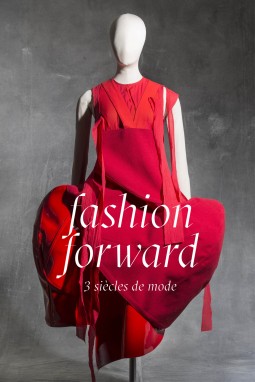
The new curator of the Europeana Fashion Tumblr is Les Arts Décoratifs, which will dedicate each day of June to its current exhibition “Fashion Forward, Three Hundred Years of Fashion”!









